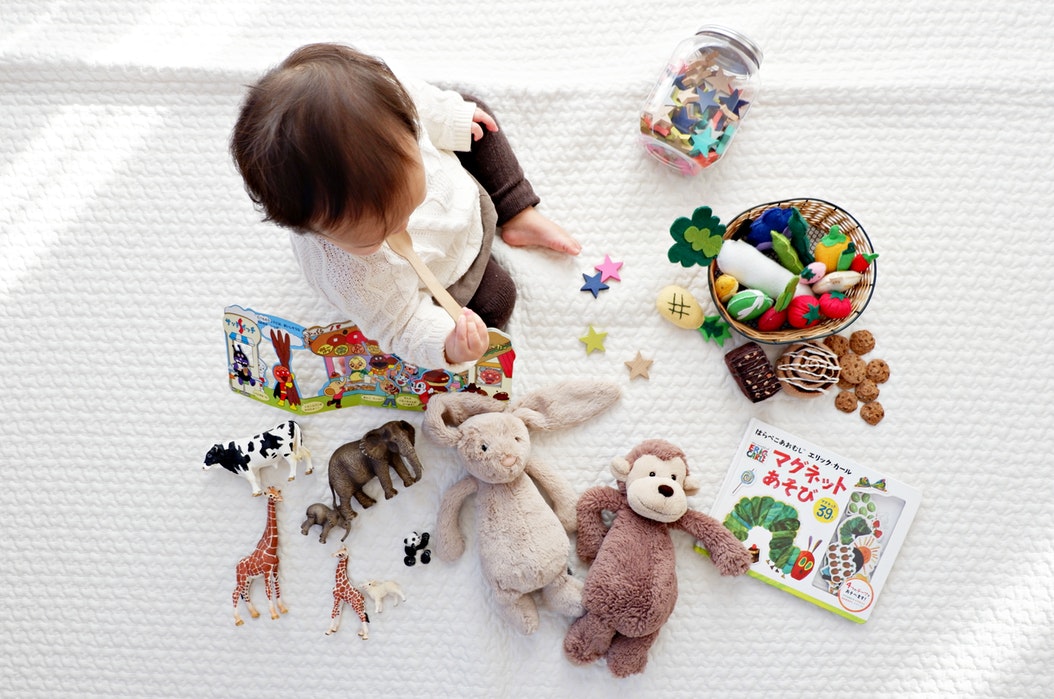Industry
Copywriter for Children & Baby Products, Clothes & Toys
4 Strategies for Writing and Marketing to Kids and Their Parents
Need help writing your website or product descriptions?
Work with a professional copywriter.

You’ve created something special, a product that you know either solves a problem or is something a child or her parents will love. But now you need to get the word out. What good is a kid’s product that no one knows exists? It’s time to write your marketing copy and start making some sales.
Write Your Website
You’ve probably been told you need an online presence, a website, for starters. You do. But that’s easier said than done. You sit down to write the copy and suddenly the words are gone. The presentation you’ve given so many times to friends, family and maybe even store owners, just isn’t coming to you now.
The few words you’ve written sound amateurish, and almost immediately, you find yourself thinking of all the other things you could, and probably should, be doing right now. How is it possible you got all those A’s in high school English and now writing feels about as natural as sprinting up a mountain backwards, blindfolded and barefoot!

Leverage your investment in professionally written website copy by repurposing it into a brochure, sales letter or other marketing tool.
Writing copy to market your children or baby product can be challenging. And you need to ask yourself if it’s the best use of your time. A professional copywriter who enjoys writing about children’s products could easily take on the task and provide you with effective marketing copy in a matter of days. You could then use that copy on your website and repurpose it for a brochure, sales letter and other marketing tools, greatly increasing your ROI in professional copy.

A good way to get started on the copy is to answer in writing the questions you’re most frequently asked about your product.
But if you’re a DIY type or your marketing budget is extremely limited, you may want to tackle the job on your own. So here are four different strategies to help you get unstuck and write your own marketing copy.
Strategy #1: Pop Quiz
Write down the questions people ask about your product. Things like:
- Why did you create this child or baby product?
- How did you come up with the idea?
- Who is it for (ideal age, type)?
- What are its features?
- How is it better than other kid products on the market?
- What has been the reaction and review of people who’ve seen or tried your product?
- What is your dream for the product and for your business?
I bet you know what’s coming next. It’s a pop quiz. You need to write the answers all those questions!
Type what comes to mind. Don’t be critical. Just get the words on paper. They don’t need to be perfect. You’ll have plenty of time to edit your copywriting later and create transitions between the different answers.
As Zig Zigler, the infamous sales motivational speaker once said, “You don’t have to be great to start, but you have to start to be great.”

Your first draft of copy doesn’t need to be perfect. Just get your initial thoughts on paper.
One thing to keep in mind when writing your responses is that to sell a toy, clothes or other product to babies or young children, the person you’re really targeting is the parent.
According to All Business, “When it comes to products for babies or kids, marketing is a delicate balance between what the youngsters want and what parents determine is appropriate.”
Strategy #2: Phone a Friend
Don’t ask your friend to write the copy for you. Instead, ask if you can pitch your product to her. Set up a role play in which she’s the shopkeeper and you’ve come in to introduce her to your product and hopefully get an order. Encourage her to ask questions and participate, as would a real store owner.
Now here’s the important part: record your conversation. When you’re done, you’ll have created a script for selling your product. Transcribe your words into written copy and polish them, fine tuning any awkward phrases or mistakes. Voila, there’s your website copy!

Writing copy can be as easy as telling a friend about your product.
Strategy #3: Basic Bullets
Start with bullets. List all the selling points of your product in writing. Each point gets its own bullet and can be no more than 15 words. Sharpen each point until it’s ultra-concise and uber-easy to understand.
Grammarly recommends thinking of each bullet point “as a mini headline. It needs to be attention-grabbing in a way that intrigues readers and compels them to read more.”

Every bullet point you write should be clear, concise and captivating.
Once you have your bullets, shuffle the order from most important to least. Now, beneath each bullet, write a short paragraph elaborating on the point. Add an explanation, details and some transition statements. When you’re done, you should have the organizational framework for your web copy and potentially any other marketing materials you need as well.
Strategy #4: Features Tell, Benefits Sell
Nearly every successful marketing campaign begins with an understanding of your product’s features and benefits. Don’t know the difference? Let me show you.
A feature is a factual statement about the qualities of your product. It’s what a product is.
A benefit explains how those features provide value to the customer. It’s what a product does.
According to WordStream, “Benefits are the outcomes or results that users will (hopefully) experience by using your product or service – the very reason why a prospective customer becomes an actual customer.”

Features are important but benefits are the real reasons people buy a product. Make sure you include both when writing your copy.
Theodore Levitt, a well-respected professor at the Harvard Business School, came up with the now-famous example of selling a drill. He said: “People don’t want to buy a quarter-inch drill. They want a quarter-inch hole!”
Let’s look at this concept as it relates to copywriting for a kid’s toy. Say you’re selling a dollhouse for a child to use with his or her Barbie dolls. Here are some features and their corresponding benefits:
Feature: The dollhouse has windows and doors that open.
Benefit: Your child will love all the realistic details throughout the dollhouse.
Feature: The kitchen area comes with a refrigerator, stove and dishwasher built in and a full dining set.
Benefit: Your child will be occupied for hours pretending to cook and eat meals in the life-like miniature kitchen.
Feature: The dollhouse folds into a lightweight, compact case with a handle.
Benefit: Easily fold, carry and store your dollhouse in a cubby or closet when done or take it with you on your child’s next play date.
Feature: We offer a full complement of dollhouse add-ons, furnishings, appliances and accessories.
Benefit: As your child grows, the dollhouse will remain a favorite toy as you introduce new components.
Once you’ve written out your product’s features and benefits, weave them together into a comprehensive narrative that can serve as the basis for your web copy.

When you’re selling a product for a baby or child, your marketing copy must target the parent.
Get Parents to Reach for Their Wallet
If you’ve tried any of the copywriting strategies above and still feel like your copy isn’t quite ready for prime time, consider working with an experienced copywriter. Even if you’re a DIY type, it could be worth your while.
Just as you would hire an accountant to do your taxes or a lawyer to provide legal advice, a professional copywriter can help accelerate your success and prevent you from making costly mistakes in marketing your product.
Your website is the face of your company. It needs to create a great first impression and to be an outstanding example of your professionalism if it’s to be an effective sales tool for you. Do-it-yourself copy may not be the best solution.

Your website’s copy and design needs to be as professional and persuasive as you are!
A copywriter for children’s products, clothes and toys can assist with any of the following marketing materials:
- Website – Introduce your product to the world and generate leads and sales.
- Brochure – Leave behind after a meeting about your product or mail to promising prospects.
- Sales Letter – Tell retailers why they need to begin stocking your product.
- Sales Sheet – Include this handy one-sheet that describes your products best features.
- Ads – Garner interest in your product and drive traffic to your website.
- Social Media – Build a following with eye-catching photos and clever posts.
- Video Script – Showcase your product in a short, creative video. Post on YouTube and include the link on your website, in your sales letters and on social media.

Get a no-obligation quote from a professional copywriter if you need assistance in writing your copy.
Take the First Step
You’ve come so far in developing your concept and product. You know you need to get going on your marketing materials. Consider exploring help on your copywriting project. Start by getting a no-obligation quote from a professional copywriter on what it would cost.
What you might find is that an investment in professional copy could be just the thing to help you launch your business and get your children’s products flying off the shelves.
* * *
Need help writing your website or product descriptions?
Work with a professional copywriter.
